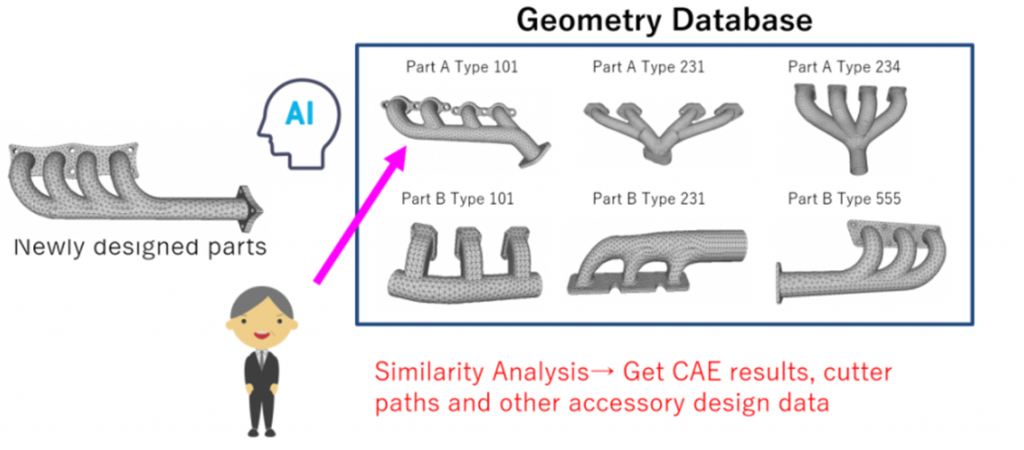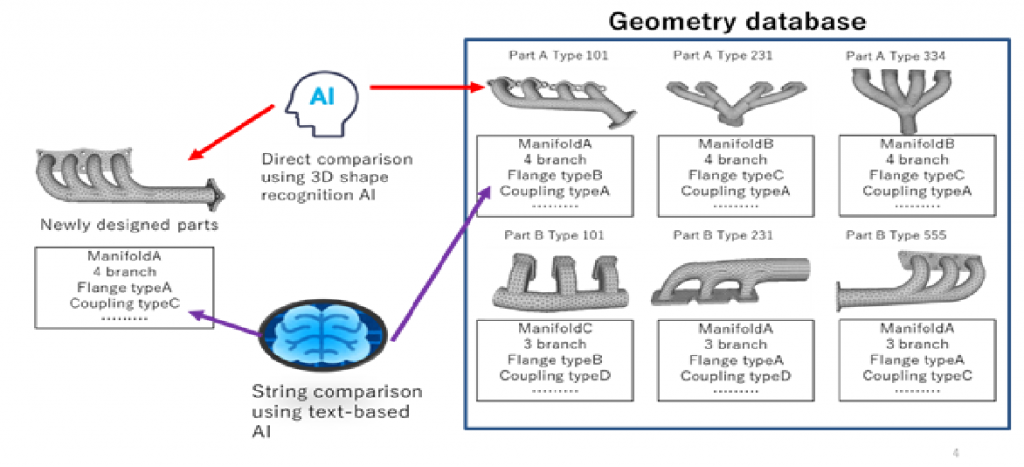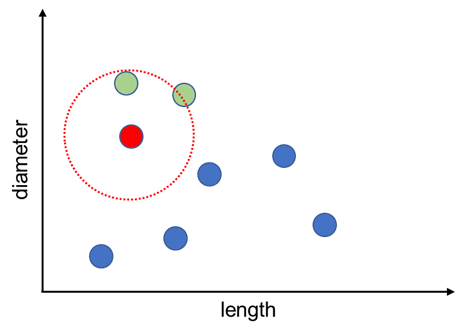Here is an introduction to the 3D matching geometry analysis technology that we have pioneered in the world.
For many years, industries such as manufacturing have relied on simulations designed using CAD (Computer-Aided Design), CAM (Computer-Aided Manufacturing), and CAE (Computer-Aided Engineering) systems. These industries, with their extensive histories, have accumulated hundreds, if not thousands, of 3D data files over the years.
Often, the employees who originally created or worked with these designs may forgot or no longer be with the company, making it challenging to locate specific 3D designs or simulations from the past. Manually searching through these vast archives can be a daunting and time-consuming task.
This is where 3D Matching AI comes into play. It provides an efficient solution for searching and matching 3D data, significantly simplifying the process of retrieving historical design information and simulations.
In the manufacturing industries of automobiles, electric appliances, and more, 3D CAD systems are extensively used to store design data as 3D shapes. However, until now, there has been no AI model capable of effectively handling 3D data.
Leveraging the latest CNN research, Astraea Software has achieved a milestone by successfully convolving 3D shape data for the first time. This innovative technology enables more accurate shape matching with 3D data, which inherently contains more information than 2D data for 3D data.
3D similarity methods involves searching for shapes in a 3D shape database that are similar to the input by calculating the nearest features difference in latent space. Astraea Software is a pioneer in developing 3D AI models capable of performing such advanced 3D Matching Analysis.

Recognition involves identifiying and understanding objects, patters, or features within data. It’s about interpreting the data to make decisions or predictions. Identifiying object usually use Object Detection methods, and there are two primary methods for understanding 3D objects: Classification and Matching.
Classification and Matching are both essential AI tasks but serve different purposes and use different methodologies. Classification is a supervised learning task that categorizes data into predefined classes using labeled datasets. In contrast, matching often employs unsupervised learning techniques to find the best or closest match within a dataset, working with unlabeled data to discover patterns and similarities.
In many design fields such as manufacturing and construction, work is shifting to be based on 3D geometry using 3D CAD. Computer-aided technologies such as CAD, CAM, and CAE are also based on 3D shapes. Therefore, it is necessary for AI to handle 3D data as well.
The conventional method of determining similarity is to use text-based AI to search for similar shapes based on character information such as part numbers. However, this method has its own problems, such as the huge amount of time required to prepare the text information for the search.

Conventional similarity judgments use a group of snapshots of 2D images as an alternative, even when identifying 3D shapes, which makes it difficult to maintain recognition accuracy, among other problems.
For details on the problems of conventional AI, please refer to The Activity Outline.
If the 3D shape can be recognized directly, as in our method, it can reduce the time and effort of preparation and avoid the problem of shooting.
The core mechanism of the 3D similarity analysis is the feature extractor.
It extracts a lower-dimensional feature vector from a more complicate raw input data such that the extracted vector encodes useful information of the input data which is suitable for further application.
Take the bolts as an example, instead of storing a bolt using its CAD data, which may require a large amount of memory and have no quantitative characteristics, we can choose to extract and store only useful features of the bolt such as its type, diameter, and length.
Intuitively, the two similar bolts should have two similar features. By utilizing such feature vectors, we can search for the bolts with similar geometry in the database.

The methods of feature extraction varies from plain mathematical processes like the Principal Component Analysis, t-Distributed Stochastic Neighbor Embedding to deep neural networks like autoencoder.
The applications of similarity methods extend far beyond simple matching. These techniques are also invaluable for anomaly detection, denoising, data compression, and numerous other emerging applications in the future.
Astraea Software as a pionner of 3D Artificial Intelligence innovation. Our cutting-edge products applying advanced 3D geometry technology to deliver exceptional 3D matching AI functions. We are committed to demonstrating our dedication to advancing 3D AI and showcasing our progress to the world.
For more information about our matching product, please click the button below.